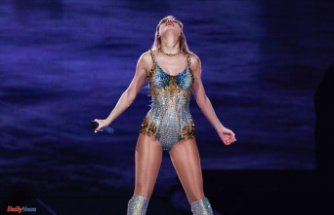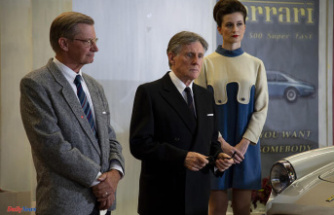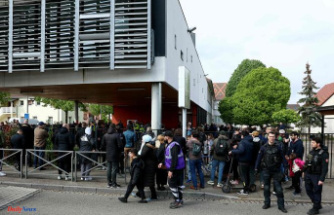A self-portrait both intimate and universal. Finally, the artist receives institutional recognition from his hometown in one of the best exhibitions organized by the Macba
Jaume Plensa: "water is The great public space"
Jaume Plensa has no tattoos. But his alter egos, yes.They have carved names of rivers (the Ottawa, the Mekong...) and musicians (Strauss, Bartok...). The water and the music, primordial elements for the sculptor, of little I used to hide inside the grand piano of his father. As if Pessoa, Plensa walks sheathed in a coat of dark, autumnal, among his heteronyms: 14 statues that hug trees (truanas has done to bring Sils, Girona). His self-portraits inhabit a forest silent, artificial, a microcosm of poetic between the hard asphalt of the plaza Joan Corominas and the Macba, which encloses the garden between tie-bars white.
"This is an exhibition that asks for silence. It is something more important to scream in a society full of noise in the media, of messages, of information, and allowing ourselves to listen to ourselves", said this morning Jaume Plensa in the presentation of this retrospective that both has resisted, that the city has taken a "23 years and a day" to refer to it. Same as that big public sculpture that the city Council does not promote (it was Carmela in front of the Palau de la Música, on the initiative of the institution itself, and because the artist passed).
"In the public space, although it is a thing of all, instruct the others. Often politicians forget the beauty. Believe in the functionality. But the urban space they need tenderness, you have to create beauty for people to feel proud of their cities", said Plensa, which has deployed a forest in the museum, and even Islands and Continents of glass. The islands are 73 display cabinets that preserved bottles thrown by a castaway of civilization-referring to "the 73 proverbs of hell of William Blake", notes Plensa - and about which he has written the names of Miró, Frida kahlo, Gaudi, Rafael... "Is a self-portrait through others", he admits.
The field 'self-Portrait with music' (2017) through 'Glückauf?'(2004), a curtain of letters. ANTONIO MORENOAll of the anthological forms a great self-portrait:intimate (of James) but also universal (the Artist, the Man). There are two ways of understanding to Plensa:
1), Reading Blake -he is obsessed with - and Vicent Andrés Estellés, and to all the others; listening to Bach, to Mahler, and to all others;to deepen in the concepts of eastern spirituality as the emptiness.
2)Splash like a child in the water or get under a waterfall on a hot August day, as in the Crown Fountain of Chicago, a public monument, that makes art a vital impulse, primary.
"When we talk about city, talk about architecture, not of the people. It is something that I do not understand. There is never a sculpture in the skyline, or people," says Plensa's kind of annoying. In Chicago, he recorded dozens of inhabitants, whose faces are projected on to the monolith of the Crown and opened the lips which gargoyles of which flows a torrent of water.
The water, the eternal flow of the that he already spoke Heraclitus, is present throughout the exhibition, as in Dante's Dream (a jar dumped of the that not to of water flow)or Rumor (1998), a drop of water that projected a crescent in the roof and, falling, fills the immensity of their sound (again, it appears Blake, with a verse-mantra to Plensa:"One thought fills immensity").
The exhibition opens with a metaphorical question of steel, Firenze (1992), and on the other side, a world in the form of a score, a sphere over three meters diameter formed by musical notes, self-Portrait with music (2017). "Sometimes it is thought that the sculpture is somewhat isolated, as an individual who lives alone. But the opposite is true", says the artist. And appointment the Sleep no more Shakespeare:"Macbeth has not killed the king, but the possibility of sleep. This relationship of ambiguity symbolizes the sculpture:through the body, you speak of the invisible".
Until the 22nd of April, the Macba is Plensa, who has given all the works of their own collection. "I would be my great collector, if I could," he admits with a smile. There is only one work of particular collection, Casacuberta Marsans: Prière, based on Baudelaire, a collection of spheres of iron that make up the verses of the beautiful poem dedicated to Satan, who, after reigning in the sky, take a rest, already defeated in the depths of hell where you dream in silence.
In the spring, the exhibition will travel to Moscow. And Barcelona will lose a forest of sculptures and poetry, rivers, and music, about which you already pose the leaves fall from the trees.
According to the criteria of
Learn more Date Of Update: 30 November 2018, 08:00











